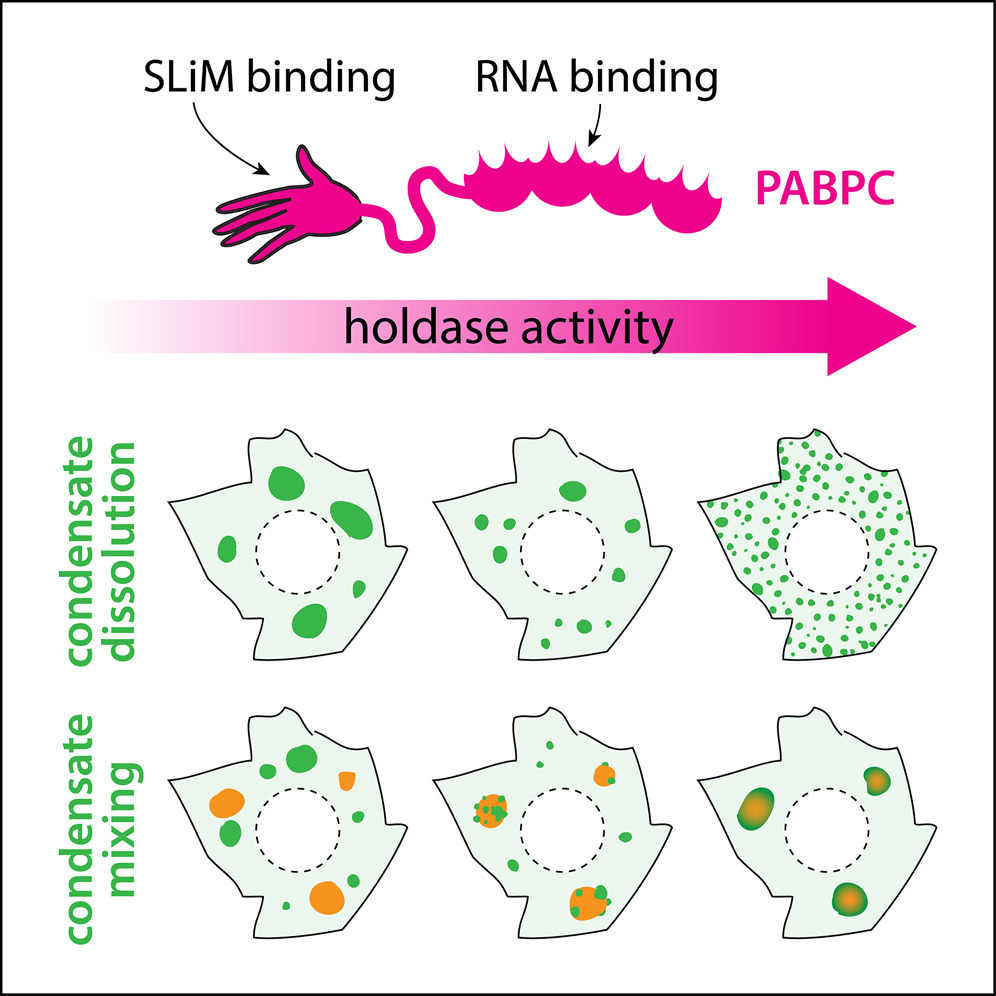Poly(A)-binding protein is an ataxin-2 chaperone that regulates biomolecular condensates

Biomolecular condensation underlies the biogenesis of an expanding array of membraneless assemblies, including stress granules (SGs), which form under a variety of cellular stresses. Advances have been made in understanding the molecular grammar of a few scaffold proteins that make up these phases, but how the partitioning of hundreds of SG proteins is regulated remains largely unresolved. While investigating the rules that govern the condensation of ataxin-2, an SG protein implicated in neurodegenerative disease, we unexpectedly identified a short 14 aa sequence that acts as a condensation switch and is conserved across the eukaryote lineage. We identify poly(A)-binding proteins as unconventional RNA-dependent chaperones that control this regulatory switch. Our results uncover a hierarchy of cis and trans interactions that fine-tune ataxin-2 condensation and reveal an unexpected molecular function for ancient poly(A)-binding proteins as regulators of biomolecular condensate proteins. These findings may inspire approaches to therapeutically target aberrant phases in disease.
Steven Boeynaems, Yanniv Dorone, Yanrong Zhuang, Victoria Shabardina, Guozhong Huang, Anca Marian, Garam Kim, Anushka Sanyal, Nesli-Ece Şen, Daniel Griffith, Roberto Docampo, Keren Lasker, Iñaki Ruiz-Trillo, Georg Auburger, Alex S Holehouse, Edor Kabashi, Yi Lin, Aaron D Gitler. Mol Cell. 2023 Jun 1;S1097-2765(23)00381-7. doi: 10.1016/j.molcel.2023.05.025.
